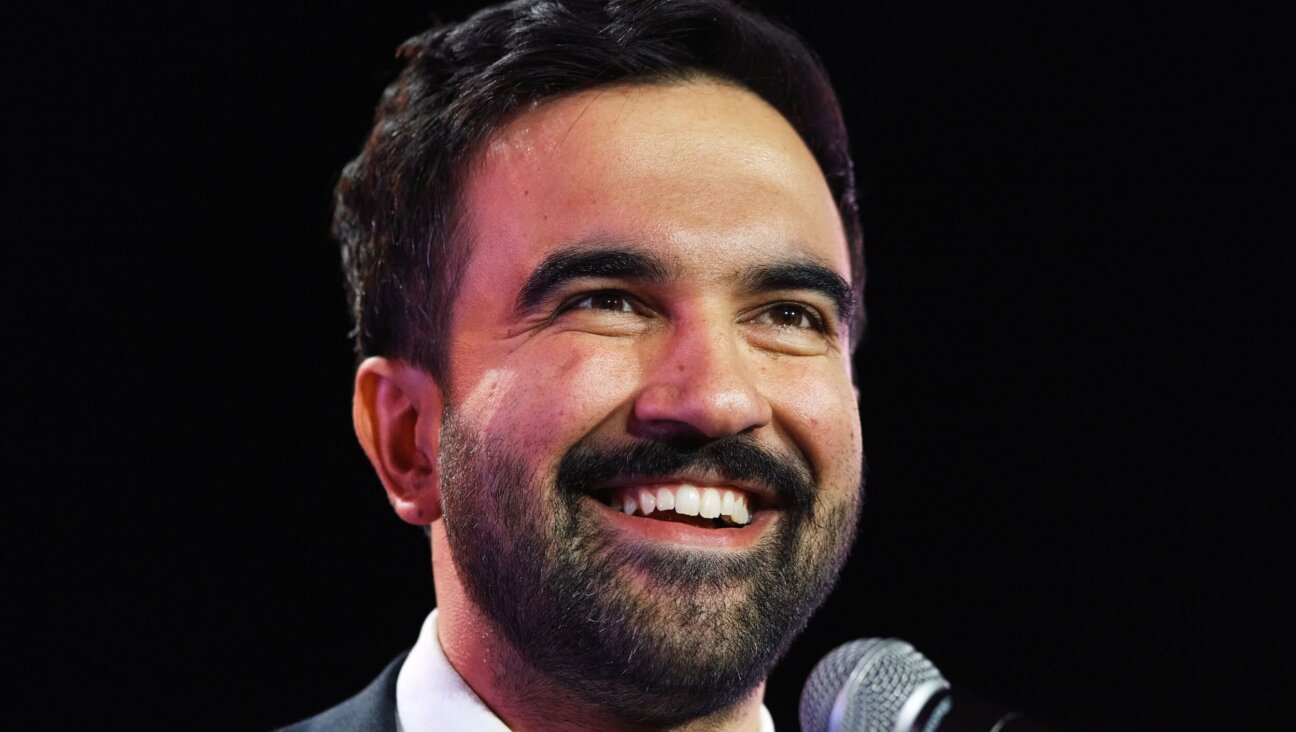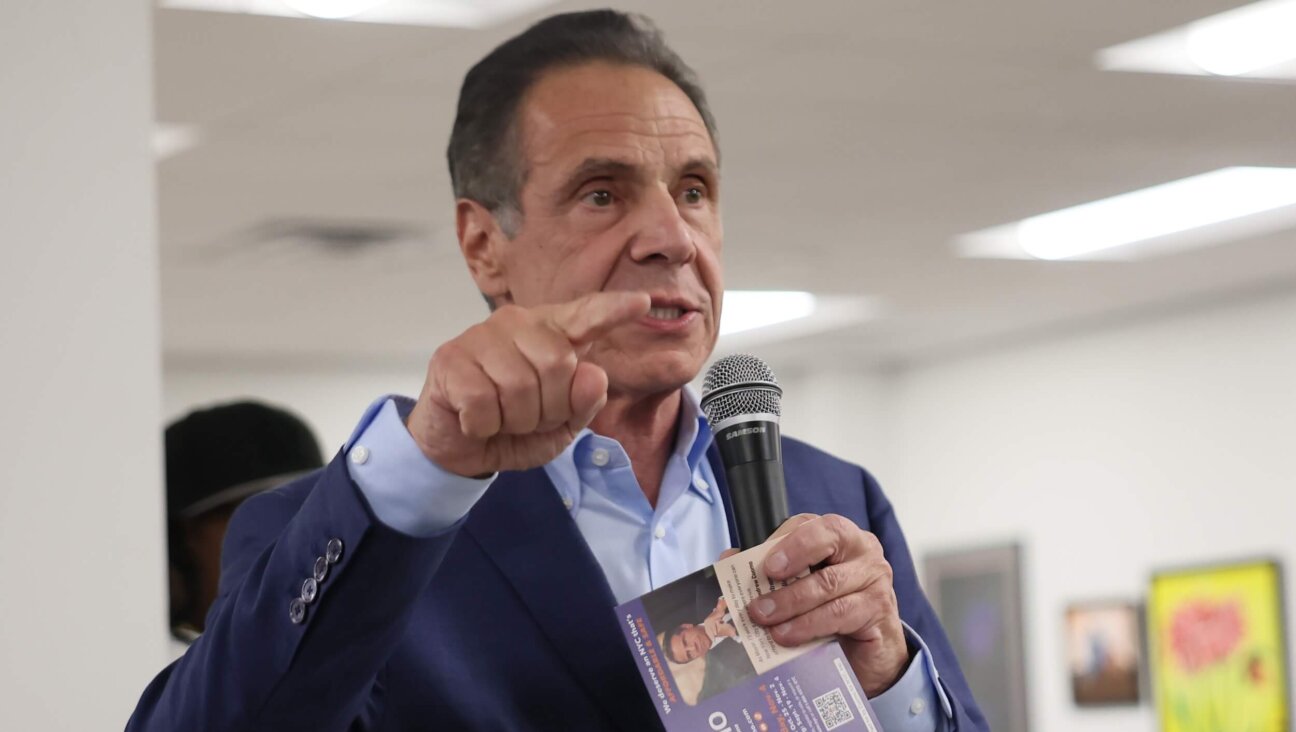East Ramapo is racially segregated. Its school board campaigns are, too.

The East Ramapo Central School District Board. Yehuda Weissmandl is fourth from the left. Image by Getty Images
Soon after Jean Fields moved to Spring Valley, in Rockland County, N.Y., in the early 1990s, she drove around to get the lay of the land.
One memorable moment was when Fields and her husband, both of whom are black, unwittingly drove into New Square, the Hasidic village run by followers of the Skverer rabbinic dynasty.
“We had only gotten in a few yards when our car was stopped and surrounded by men,” Fields said Tuesday while testifying in a trial over the district’s voting system. The men told them they couldn’t be there, and they drove away, she said.
More than 20 years later, Fields decided to run for the East Ramapo Central School District’s board on a platform of increasing funding to the public schools and opposing the Orthodox community’s control of the district. She still remembered that incident — and she decided not to campaign in Jewish neighborhoods.
“Being a black woman, I didn’t feel comfortable going there,” she said.
East Ramapo, a district in suburban Rockland County, N.Y., about an hour’s drive from Manhattan, is highly segregated. Its three Hasidic villages are more than 95% white, according to census records, while its black and Latino populations are clustered in a small area in the district’s center.
But what emerged Tuesday, in the sixth day of a voting-rights trial in U.S. District Court in White Plains, N.Y., is just how segregated its school board election campaigns are as well.
Trial testimony showed that pro-public school candidates make almost no effort to reach out to Orthodox voters, and pro-yeshiva candidates do not conduct outreach to people of color—even when they are people of color themselves.
“The communities in this county have stopped talking to one another,” said Paul Adler, who was former chairman of the Rockland County Democratic Party and acted as liaison between the area’s Hasidic community and then-Senator Hillary Clinton.
East Ramapo has been for more than a decade the staging ground for a conflict over school funding. On one side are Orthodox Jews, who generally vote for school-board members who keep taxes low while providing universal busing for yeshiva students. On the other are advocates of public schools, whose 9,000-student enrollment pales compared to the 30,000 in private schools.
As the board expanded state-mandated busing to accommodate the swelling yeshiva population, they cut hundreds of teaching positions and most extracurricular programs at the public schools. Some positions and programs have been added back since the state appointed a monitor for the district, in 2014, but public-school graduation rates remain low.
The East Ramapo trial hinges on the board elections, in which candidates who support policies that favor the private yeshivas—whose enrollment is 98% white—invariably win. The NAACP, which is suing the district, says that amounts to illegal disenfranchisement of black and Latino voters, who make up the majority of the advocates of the public schools. Lawyers for the district argue that the results simply reflect the voting majority’s policy beliefs.
But what both sides have laid bare in questioning is how siloed the two groups’ campaigns are from the communities whose interests they oppose.
Fields, the African American board candidate, and a former principal of a public high school in the district, said on Tuesday that while she had visited many churches and several barber shops during her 2016 campaign, she didn’t visit any synagogues, and made no campaign materials in Yiddish, the first language of many Hasidic Jews in the county.
Another black candidate, Eric Goodwin, said in an affidavit that Aron Wieder, who represents a Hasidic area of East Ramapo in the county legislature, had advised him not to waste his time campaigning in Jewish neighborhoods. Instead, he said, he should focus his limited resources on campaigning in minority neighborhoods, where his voting base lives.
“A squeaky wheel gets the oil,” Goodwin said last week in his testimony. “If you don’t come to hear me, or if I can’t get my message to you, I won’t know your concerns.”
Fields was followed on the stand Tuesday by Rabbi Hersh Horowitz, the executive director of the Community Outreach Center, an organization that provides professional development, senior care, pre-K and other services in the Orthodox community in East Ramapo. Horowitz said that he held several events at the Center educating people about the school board elections and the issues involved. No black or Latino people ever attended the events, he said.
Yehuda Weissmandl, a board member since 2011, was next to the stand. He said that despite his office being close by a street with a lot of foot traffic in a predominantly black neighborhood, he did not canvass the area for his campaigns. When pressed by a lawyer for the NAACP, he first said he could not recall speaking to a black person for his campaigns, then later said he could remember at least one instance, but not who that person was.
“I don’t interact with humanity based on color,” Weissmandl said.
There have been some signs of reaching across the divide. Fields said she hosted a meeting with about 45 Orthodox women in a public library to discuss her policy goals. The NAACP’s candidate forums have attracted one Orthodox-supported candidate over several years. (Hasidic witnesses have said that there have been no candidate forums in their community.)
Yet advertisements for Orthodox-supported candidates that appear in Orthodox newsletters lay out the stark divide.
“We must all come out to vote for our community’s candidates,” reads an ad in Yiddish for Weissmandl and two other candidates from 2011. “We cannot, God forbid, allow the other side to win.”
Ari Feldman is a staff writer at the Forward. Contact him at [email protected] or follow him on Twitter @aefeldman

















